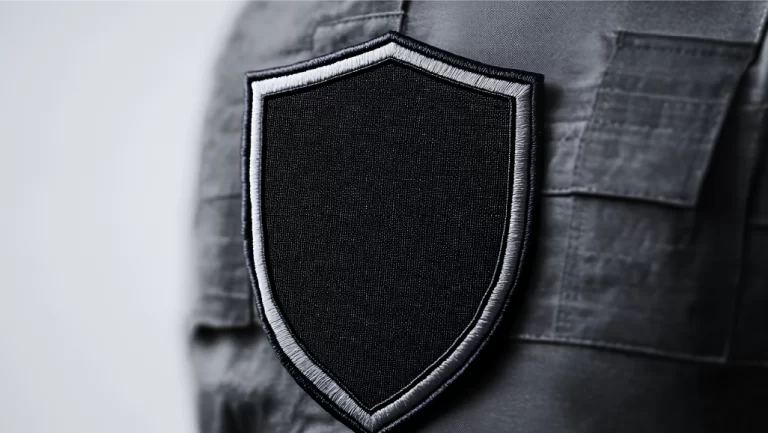The armor is much more than a protective layer; it’s a complete and specialized system designed to guarantee safety against threats such as projectiles, explosions, or direct attacks. Although it’s often associated only with armored vehicles or bulletproof vests, its scope is much broader, with applications ranging from personal protection to safeguarding critical infrastructure.
In this article, we’ll explore what an armor system is, how it works, its main components, the different types available, and how technological advances are revolutionizing this industry.
What is an armor system?
An armor system is a set of materials, layers, and technologies working together to stop, deflect, or absorb the energy of an impact. Its goal is to protect human lives, vehicles, or structures from various levels of threat, ranging from light firearms to high-caliber armor-piercing ammunition.
The key to an armor system lies in its multilayer design, which combines rigidity, flexibility, and strength to create an effective barrier against different types of attacks.
How an armor system works
The effectiveness of an armor system does not depend solely on the hardness of its materials but also on how these interact. Protection is based on physical principles that allow it to:
- Disperse impact energy: Layers distribute the projectile’s force to reduce damage.
- Absorb impact: Ballistic materials such as aramid or polyethylene prevent energy from concentrating in one spot.
- Stop the projectile: Rigid layers of steel, ceramics, or hybrid composites halt the advance of the projectile, even from high-caliber attacks.
- Minimize secondary trauma: Internal layers, such as special foams, reduce the risk of internal injuries upon impact.
This system not only stops threats but also does so without compromising comfort, mobility or visibility, depending on its application.
Main components of an armor system
The success of an armor system depends on its materials and their strategic combination. The most common components include:
1. Ballistic fabrics
These are the foundation of many armor systems. They are made of high-strengthfibers such as:
- Aramid Known for its strength and lightness, ideal for bulletproof vests and reinforcements in armored vehicles.
- Ultra-high molecular weight polyethylene (UHMWPE): Lighter than aramid and with greater energy absorption capacity, widely used in next-generation armor.
2. Rigid plates or composites
Used in critical areas requiring greater resistance. These may include:
- Ballistic steel: Economical and strong, though heavier.
- Ceramics: High capacity to stop high-velocity projectiles.
- Hybrids: Combine several materials to provide advanced protection with less weight.
3. Ballistic glass
Essential in armored vehicles and buildings, ballistic glass consists of multiple layers of glass and polymers that can stop projectiles without compromising visibility. Its resistance levels vary depending on thickness and the type of threat it must withstand.
Their resistance levels vary depending on their thickness and the type of threat they must face.
4. Foams and absorption layers
In personal and vehicular armor, these layers reduce secondary impact, preventing injuries caused by energy rebound.
Types of armor systems
The armor systems adapt depending on the context and type of threat. The main types are:
1. Personal armor
Includes bulletproof vests, helmets, and shields. These are essential for military personnel, police officers, bodyguards, and journalists working in high-risk zones.
Protection levels range from lightweight vests that stop handguns to systems that resist assault rifle ammunition.
2. Vehicle armor
Designed to protect occupants of cars, trucks, or vans. Vehicle armor reinforces:
- Bodywork
- Doors
- Windows
- Floor and roof
t is widely used by executives, public figures, and cash-in-transit services.
3. Architectural armor
Protects critical infrastructures such as:
- Government offices
- Embassies
- Jewelry stores
- Bank booths
This type of armor is also applied in residential spaces seeking higher levels of security.
Blindaje en diferentes industrias
The use of armor goes beyond personal or vehicular safety; it has also become essential in other industries. For example, in the aerospace sector, ultra-light armor solutions are developed to protect aircraft cabins and critical areas. In the maritime industry, ballistic panels are used to reinforce vessels operating in high-risk zones. In industrial settings, armor is implemented to protect valuable machinery and equipment against impacts, controlled explosions, or workplace accidents.
The future of armor systems
As threats evolve, so do systems for armor. Today, manufacturers are investing in research and development to create more advanced materials, such as memory fibers, self-repairing composites, and smart solutions capable of adapting to the threat level in real time. This approach not only improves protection but also optimizes the weight and comfort of the systems, making armor increasingly accessible and functional in various sectors.
Technological advances in armor systems
Technology has completely transformed the armor system sector. Manufacturers are now seeking solutions that are lighter, stronger, and more sustainable. Innovations include:
- Nanotechnology: To create ballistic fibers with higher absorption capacity.
- Hybrid composites: Combining extreme resistance with reduced weight.
- Sustainability: Development of recyclable materials and more eco-friendly manufacturing processes.
- Smart armor: Systems with sensors that detect and report damage or impacts.
Importance of maintenance
Whether personal or vehicular, an armor system requires periodic inspections to guarantee effectiveness. Factors such as wear, humidity, sun exposure, or prolonged use can affect its performance.
Proper maintenance extends the system’s lifespan and ensures it meets protection standards when needed most.
The armor is a combination of science, technology, and precision. From bulletproof vests to armored vehicles and reinforced structures, these systems save lives by providing reliable protection against ballistic and explosive threats.
With the constant evolution of materials and design, the future of armor systems points toward lighter, smarter, and more sustainable solutions, all while maintaining their main goal: protecting what matters most, human life..



